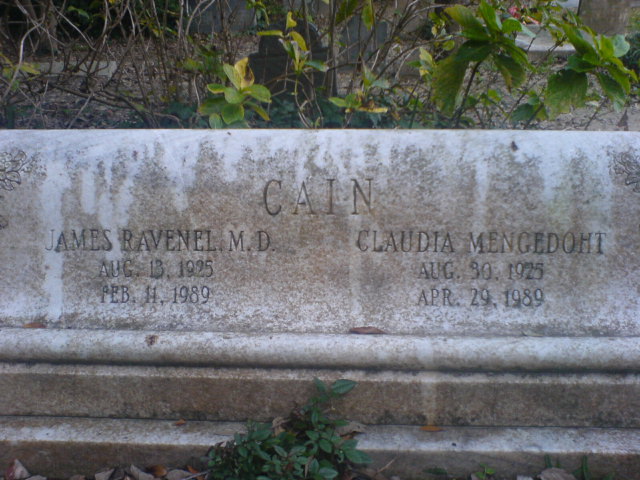Self Portrait in a Convex Mirror
 Parmigianino's Self Portrait in a Convex Mirror
Parmigianino's Self Portrait in a Convex Mirror
by
Varo Borja
In this essay I will attempt to relate to the reader some background information on the Italian Mannerist painter Parmigianino, and also attempt an analysis from three perspectives of one of his major paintings, Self Portrait in a Convex Mirror. The three methods of analysis that I will be utilizing are as follows: Formalism, Semiology (with a hint of Psychoanalysis thrown in for good measure), and Marxism. In conclusion, I will relate to the reader why I feel this work to be of historical as well as contemporary importance.
Girolano Francesco Maria Mazzola, or Parmigianino (little one from Parma) was born the eleventh of January, 1503 as the eighth child of Filippo Mazzola and Maria di ser Guglielmo (Wikipedia, 2007) in Parma, Italy, but was raised by his uncles Pier and Michele Mazzola after his father’s death two years after Parmigianino’s birth. Vasari noted these two uncles as being “modestly talented artitsts” in their own right, and young Parmigianino entered their workshop as an apprentice. He assisted his uncles in the decoration of a chapel in San Giovanni Evangelista, and completed several more works in Parma before moving on to Fontanellato and then Rome. He also became quite adept at drawing, executing an exceptionally large array of pieces on paper, as well as a smaller, but significant number of prints. After fleeing Rome at the invasion of the Imperial German army, he returned to Parma where he became a devotee of alchemy, a sort of magical cult insistent, among other things, on finding a way to convert base metal into gold. He fell out of favor with the church and died young, at the age of 37. He was reportedly buried with a cross of cyprus wood standing erect on his chest.
Parmigianino’s Self Portrait in a Convex Mirror is an intriguing piece, owned by several major collectors of the 16th century, including the pope Clement VII. From a formalist perspective, the painting is done with a limited, monochromatic-like pallette with strictly controlled brushwork and gentle, golden Venetian style light emanating from the window in the upper left background and illuminating Parmigianino’s features. In the words of Vasari, Parmigianino exhibited features of the “divine” (Art of Parmigianino, 2003) and his gentle use of tenebrism and chiaroscuro lends to the elegant nature of the piece and complements Parmigianino’s intention of exhibiting himself not as a common craftsman, but as a sort of lower nobility risen from the ranks and placed within sight of kings and popes by his talent alone.
From a semiotic perspective, Self Portrait in a Convex Mirror exhibits, in my opinion, two main themes. The first involves his use of light and shade. Traditionally, the forces of good and evil (much present in the mind of 16th century Europeans) were grouped as the forces of light as opposed to the forces of darkness. Parmigianino was a man much torn by his affinity for the Catholic Church and his darker side that was drawn to the magical theorems of alchemy. In the painting, light pours from the window and is enveloped in a curtain of darkness lurking on the right and center foregrounds of the painting. Also, in traditional Christian iconography, the forces of heaven are portrayed as being on the right hand of the God facing the viewer, while the forces of darkness are portrayed on the left hand of the enthroned Christ. Parmigianino juxtaposed and jumbled up these two forces in the painting, lending creedence to the crowd who supposed that he was a madman. In the middle sits Parmigianino, bedecked in furs and lace and donning a type of signet ring (a whole sign unto itself), master of both light and dark and the mad genius in control of his own destiny. The other predominant sign that I see in this painting consists of the temporance of youth and the immortality of the soul. From a pragmatic perspective, Parmigianino is seen as a gifted, yet vain usurper of the old school, classical Academicians devoted to linear perspective and defined, logical, almost perfect features. Parmigianino was described as “divine” by Vasari, and indeed, he is well proportioned and exhibits angelic aesthetics. From the course Parmigianino’s life took, ever more towards darkness and distortion, his choice of placing himself within a “convex mirror” was very apropos. Although he is master of his own destiny and in control of the forces of both darkness and light, his precocious intelligence and youthful beauty, as time passes, become ever more stretched and distorted until he is torn asunder by the very forces that he sought to control. In this dichotomy of youth versus eternity, Parmigianino retains the mastery, because although he was in fact torn asunder by his own vain assumptions and outright madness (he died at age 37), he is immortalized in the very painting designed to do just that.
From a Marxist perspective, Parmigianino’s self portrait exhibits most of the common themes associated with Marxism. To achieve relevance with this thread of thought, I feel it is important for the reader to realize a few facts from the life of the painter. He was born into a family of eight children, and his father died of the plague when the artist was two years old. He was raised by his uncles, ever in their shadow until his own talent propelled some in Rome to comment that he was “Rafael reborn” (Wikipedia, 2007). In the classic manner, Parmigianino was a self made man, redolent of sweat and the savor of success at a young age. With this success came the corrupting influence of the nobility and the wealthy bourgeios patrons, ever hungry to consume more talent from the rank and file of the proletariat. Born into a family of artisans, risen to the rank of petty noble and destroyed by the very success he savored, Parmigianino is a classic case of the self made man turned sellout and torn to pieces by the class of wealthy, landowning oppressors at the top of the economic food chain. Parmigianino’s ostentatious display of finery such as his lace ruffled shirt and fur lined tunic is clearly, although somewhat tastefully, nouveau riche in style, juxtaposed with his angelic, self satisfied and “forgetful of his origins”serene face saying to all who view him that this is truly a man of the world. Probably the most conspicuous indicator that Parmigianino was a class climber was his choice of recipients for this masterful depiction of the young up and comer: Pope Clement VII, the very pinnacle of the 16th century social ladder.
In conclusion, I feel it is important for the reader to realize two things about this painting concerning its historical and contemporary value. From a historical perspective, this painting was groundbreaking in style as well as content. As a proponent of the new style today called Mannerism, Parmigianino was one of those who cast aside the traditional, classical, or “perfect” ideal of the luminaries of the Rennaisance, creating a place in the mind of man for the abstract and the dark. Not dark in the sense of medieval or gothic superstitions and chicanery, but dark in the psychological sense. Man confronting himself in a mirror and finding the result to be convex, elongated, torn by conflicting ideologies and desires, erotic yet spriritual, but above all, beautiful and to be desired by angels and demons alike. From a contemporary perspective, Self Portrait in a Convex Mirror beckons us to take an inventory of our own souls. What are our limitations? What can we see within ourselves that is beautiful, or erotic, or vain, or desirous of the light emanating from our cell of solitude, surrounded by darkness and yet undaunted by the voices from the shadows telling us to not reach for the clouds, not to stretch ourselves to master our own destinies? Yes, Parmigianino was a type of visionary, a seer capturing somewhat the feelings of all men and women on his canvas, both the darkness and the light, the young and the eternal, and for that his place in history and the limitless future is secure.
Bibliography
The Art of Parmigianino. David Franklin with an essay by David Ekserdjian: Yale University Press, New Haven and London. 2003.
Wikipedia. Found at: http://en.wikipedia.org/wiki/Parmigianino
Vasari: Lives of the Artists. Found at: http://www.efn.org/~acd/vite/VasariLives.html
Mannerism: The Crisis of the Renaissance and the Origin of Modern Art. Arnold Hauser: Routledge and Kegan Paul, London. 1965.


